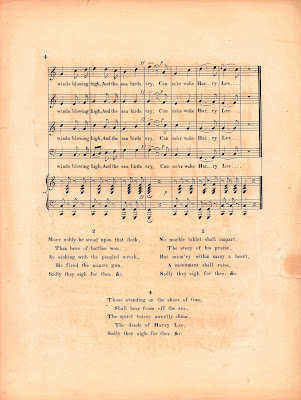The building at 318 Huron Avenue, now known as the Firelands Apartments, was constructed
in 1853 from limestone. Built in the Italianate style, this structure was
considered a mansion at the time, and served as a spacious home for Dr. Ebenezer
Shaw Lane’s family.
 |
| Dr. Ebenezer S. Lane, 1819-1893 |
Dr. Lane’s wife was Pallas Anderson, whose father Dr.
George Anderson was the first physician to settle in Sandusky. During the
cholera epidemic of 1849, Dr. Lane worked long hours to aid the many people who
were sick with the dreaded illness that took many lives.
Prior to 1915, the
address of this home had been 114 Huron Avenue, as seen on this nineteenth
century Sanborn map. The creators of the Sanborn map made an accurate depiction
of the curved double steps that lead up to the main entrance of the home.
After Dr. and Mrs. Lane moved to Chicago in 1870,
John H. and Elizabeth Hudson purchased the home and property.
 |
| John H. Hudson, 1827-1893 |
John H. Hudson was superintendent of the
Mad River and Lake Erie Railroad prior to the Civil War. After the war, he had
a grain, salt and lime business at the foot of Columbus Avenue. His second wife was Elizabeth Orton Hudson. After her husband died in
1893, Mrs. Hudson supported herself by painting and giving art lessons.
She also rented out some of the upper rooms. In the late 1890s, a female
doctor, Dr. Emily Blakeslee, had her medical office and residence in the building, perhaps renting from Mrs. Hudson. Dr.
Blakeslee went on to practice medicine in Sandusky for over fifty years.
This straight razor, once used in Dr.
Blakeslee’s office, is now a part of the historical collections of the Follett
House Museum.
From about 1908 to the early 1910s, Dr. W.A. Crecelius had
his medical practice in the building. Dr. Clarence Schimanksy practiced
here from 1916 through the 1930s. Dr. Emil Meckstroth had his office here in the 1940s and 1950s. Now the Firelands Apartment building is a
multi-family rental unit. There have been additions to the original structure
on the eastern and southern sides of the building. To learn more about the many
historic buildings in Sandusky, see Ellie Damm’s book
Treasure by the Bay, and Helen Hansen’s book,
At Home in Early Sandusky.

 this blog
this blog











































